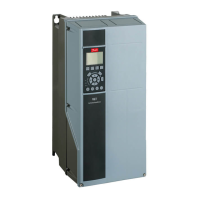
Do you have a question about the Danfoss VLT HVAC Drive and is the answer not in the manual?
Explains the meaning of symbols used throughout the manual for user guidance.
Details critical warnings about high voltage hazards and necessary precautions.
Outlines essential safety precautions for operation, installation, and maintenance.
Provides general warnings regarding electrical hazards and safe operating practices.
Lists crucial procedural steps to ensure safety before starting repair work.
Discusses specific conditions that may affect the drive's electrical ratings.
Highlights important cautions related to charged capacitors and necessary waiting times.
Provides guidance for installations at high altitudes and PELV requirements.
Details critical steps to prevent accidental motor starts for operator safety.
Explains the Safe Stop functionality and its safety category compliance.
Provides specific information and warnings for IT line power connections.
Lists the software versions and approvals applicable to this manual.
Guides on the proper and legal disposal of the drive's electrical components.
Explains how to identify the drive using its label and type code.
Details how to interpret the Type Code string for precise drive identification.
Lists common abbreviations and industry standards referenced in the manual.
Covers preparatory steps and checks before commencing mechanical installation.
Provides essential procedures and guidelines for installing the drive unit.
Details general mounting guidelines, clearances, and considerations for proper installation.
Specific mounting instructions for A2 and A3 enclosure types, including drilling details.
Specific mounting instructions for A5, B1, B2, C1, and C2 enclosure types.
Covers the general procedures and requirements for connecting the drive's electrical components.
Provides general information, terminal tightening torques, and cable regulations.
Explains the importance and selection of fuses for branch circuit and short circuit protection.
Details grounding requirements and specific considerations for IT line power systems.
Offers an overview of line power wiring connections for different enclosure types.
Provides specific steps for connecting line power to A2 and A3 enclosures.
Details line power connection procedures for A5 enclosure types.
Explains line power connection steps for B1 and B2 enclosure types.
Provides line power connection procedures for C1 and C2 enclosure types.
Introduces the process and precautions for connecting the motor cable correctly.
Presents an overview of motor wiring configurations for various enclosures and motor types.
Step-by-step guide for connecting the motor to A2 and A3 drives.
Details motor connection steps for A5 enclosure types.
Explains motor connection steps for B1 and B2 enclosure types.
Provides motor connection steps for C1 and C2 enclosure types.
Offers a practical wiring example and testing procedure for motor rotation.
Guides on how to safely access the control terminals for wiring connections.
Describes the different types of control terminals and their connections.
Outlines the procedure for testing motor connection and rotation direction safely.
Discusses general electrical installation practices and control cable shielding.
Explains the function and settings of key DIP switches for configuration.
Covers the final steps for optimizing drive performance and conducting tests.
Describes the three primary methods for operating the drive: GLCP, NLCP, and communication.
Details how to operate the drive using the Graphical Local Control Panel.
Explains operation procedures for the Numeric Local Control Panel.
Covers connecting the drive via an RS-485 bus for serial communication.
Guides on connecting a PC for drive control and programming via USB or RS-485.
Introduces available PC software tools like MCT 10 for drive management.
Offers useful tips and tricks for efficient drive operation.
Explains how to quickly save and load parameter settings from the GLCP.
Details methods for initializing the drive to its factory default settings.
Introduces the process of programming the drive's extensive functions.
Explains the basic setup procedures for configuring drive parameters.
Describes how to access and use the Quick Menu for efficient parameter setup.
Guides on configuring application-specific functions for HVAC systems.
Explains navigation and usage of the Main Menu for comprehensive parameter programming.
Details how to select parameter groups and individual parameters for configuration.
Provides instructions on how to modify parameter values using the control panel.
Guides on how to modify text-based parameter values using navigation keys.
Explains how to change multiple numeric parameter values efficiently.
Offers a step-by-step guide for modifying parameter data values.
Describes how to manage and program indexed parameters.
Provides a comprehensive overview and list of all programmable parameter groups.
Covers parameters related to drive operation, display, and LCP settings.
Details parameters for configuring motor characteristics and settings.
Explains parameters for configuring brake functions and resistors.
Covers parameters for setting speed references and ramp profiles.
Details parameters for configuring operational limits and warning thresholds.
Explains parameters for configuring digital inputs and outputs.
Covers parameters for configuring analog inputs and outputs.
Details parameters for communication interfaces and installed options.
Explains Profibus communication parameters and setup.
Covers CAN bus communication parameters and configuration.
Details LonWorks communication parameters and setup.
Explains parameters for configuring Smart Logic functions.
Covers parameters for special drive functions and settings.
Provides information about the drive's hardware, software, and identification.
Lists parameters for reading various drive status and operational data.
Covers additional parameters for reading drive maintenance logs and data.
Details parameters for configuring FC closed-loop control functions.
Explains parameters for configuring extended closed-loop control functions.
Covers parameters for HVAC application-specific functions.
Details parameters for configuring timed actions and schedules.
Explains parameters for cascade controller configuration.
Covers parameters for the Analog I/O Option MCB 109 configuration.
Explains how the drive signals and indicates alarms and warnings for fault diagnosis.
Provides detailed technical specifications for the drive's performance and capabilities.
Lists electrical specifications for 3-phase 200-240 V AC line supply.
Details electrical specifications for 3-phase 380-480 V AC line supply.
Discusses special operating conditions and their impact on drive performance.
Explains why derating is necessary under specific operating conditions.
Provides guidance on derating the drive's output current for high ambient temperatures.
Details derating requirements for operation at lower air pressures or high altitudes.
Explains derating considerations for continuous operation at low motor speeds.
Covers derating guidelines for long or large cross-section motor cables.
Describes how the drive automatically adapts parameters to ensure performance.
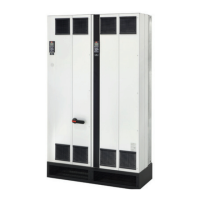
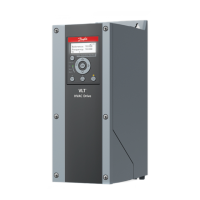
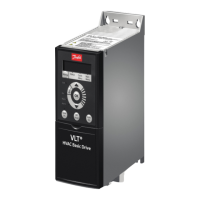
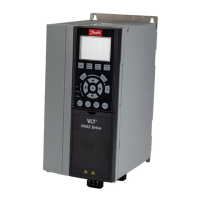
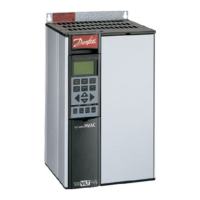
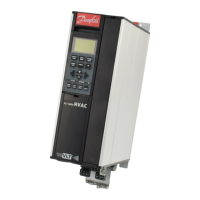
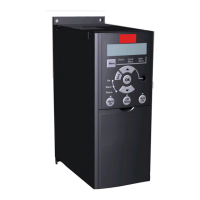
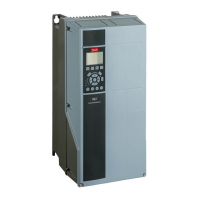
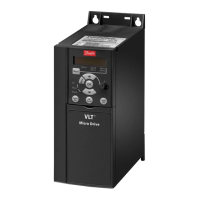
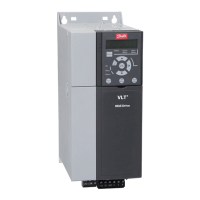

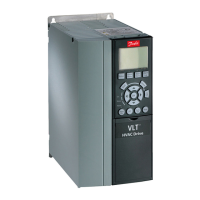
